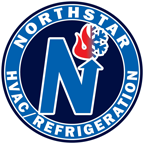Heat Recovery in Refrigeration: Reducing Waste and Saving Energy
Written by Ed Rice
Refrigeration systems are essential in industries like food processing, pharmaceuticals, and manufacturing. However, they are also among the most energy-intensive systems in operation. The good news is that modern refrigeration systems now incorporate heat recovery technology to repurpose waste heat, significantly improving energy efficiency and reducing operational costs.
In this blog post, we’ll explore how heat recovery works in refrigeration systems, its benefits, and how businesses can implement this technology to save energy and reduce waste.
What is Heat Recovery in Refrigeration?
Refrigeration systems generate heat as a byproduct of the cooling process. In traditional setups, this heat is often vented into the atmosphere, wasting valuable energy. Heat recovery systems capture and repurpose this waste heat for various applications, such as:
Heating water for sanitation or industrial processes.
Providing space heating in offices or production facilities.
Supporting secondary heating needs, such as preheating fluids.
By utilizing this otherwise wasted energy, businesses can significantly lower their energy consumption and reduce their carbon footprint.
How Does Heat Recovery Work?
Heat recovery in refrigeration systems typically involves a heat exchanger, which captures the heat from the refrigerant during the compression cycle. The captured heat can then be redirected and used for other purposes.
Key components of a heat recovery system include:
Heat Exchanger: Transfers heat from the refrigerant to another medium, such as water or air.
Control Systems: Regulate the flow and distribution of recovered heat to ensure efficient utilization.
Storage Tanks or Buffer Systems: Store the captured heat for use when needed.
Benefits of Heat Recovery
Energy Efficiency
By reusing waste heat, businesses reduce the need for separate heating systems, which can significantly cut energy consumption. This dual-purpose functionality increases the overall efficiency of the refrigeration system.
Cost Savings
Lower energy consumption translates to reduced utility bills. Heat recovery systems also decrease reliance on traditional heating methods, further saving costs associated with fuel or additional equipment.
Environmental Impact
Repurposing waste heat reduces a facility’s overall carbon footprint, aligning with sustainability goals and environmental regulations.
Improved System Performance
By removing excess heat from the refrigeration system, heat recovery can enhance system performance and extend the lifespan of critical components.
Regulatory Compliance
Many regions have energy efficiency standards and incentives for implementing heat recovery systems, helping businesses meet compliance requirements while accessing financial benefits.
Applications of Heat Recovery in Refrigeration
Food and Beverage Industry
Heat recovery is used to preheat water for cleaning and sanitation, saving energy in food processing and production facilities.
Pharmaceutical Industry
Reclaimed heat can support temperature control processes, sterilization, and heating needs.
Cold Storage Facilities
Recovered heat can provide space heating in areas such as loading docks, offices, or break rooms.
Ice Rinks
Excess heat from the refrigeration process can be used for heating locker rooms or melting ice from resurfacing equipment.
How to Implement Heat Recovery
Assess Your System
Evaluate your existing refrigeration system to identify opportunities for integrating heat recovery technology.
Design a Custom Solution
Work with HVACR professionals to design a heat recovery system tailored to your facility’s needs. Consider factors such as heat demand, system capacity, and budget.
Upgrade Equipment
Install heat exchangers, controls, and any necessary infrastructure to capture and repurpose waste heat effectively.
Monitor and Maintain
Ensure your system operates at peak efficiency with regular monitoring and maintenance.
How Northstar Refrigeration Can Help
At Northstar Refrigeration, we specialize in designing and implementing energy-efficient solutions for commercial and industrial facilities. Our team can help you:
Assess your existing refrigeration system for heat recovery potential.
Design and install a customized heat recovery system.
Navigate incentives and rebates for energy-efficient upgrades.
Maintain your system for long-term efficiency and performance.
Conclusion
Heat recovery in refrigeration is a practical and impactful way to reduce waste, save energy, and lower operational costs. By capturing and repurposing waste heat, businesses can enhance their sustainability efforts while improving efficiency and cutting expenses.
Ready to optimize your refrigeration system? Contact Northstar Refrigeration at (508) 888-3692 to learn how heat recovery can transform your facility and contribute to your sustainability goals.
(508) 888-3692
www.northstarhvacr.com
Edward Rice
Director of Marketing,
Northstar Refrigeration, Inc.
95 Camelot Drive, Unit 1,
Plymouth, MA 02360
erice@northstarhvacr.com www.northstarhvacr.com
p: (508) 888-3692 x115
m: (508) 561-8638



